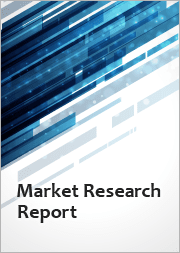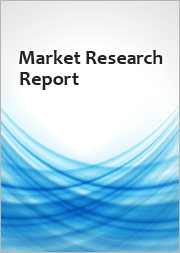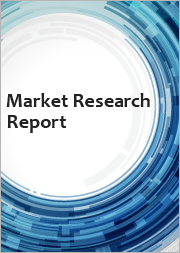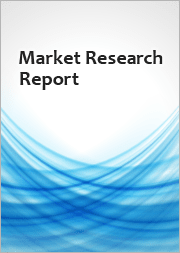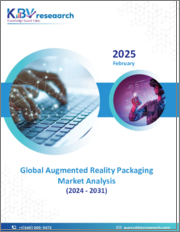
|
시장보고서
상품코드
1682895
세계의 증강현실 포장 시장 규모, 점유율, 동향 분석 : 최종 용도별, 지역별 전망 및 예측(2024-2031년)Global Augmented Reality Packaging Market Size, Share & Trends Analysis Report By End Use (Food & Beverages, Healthcare & Pharmaceuticals, Personal Care & Cosmetics, and Other End Use), By Regional Outlook and Forecast, 2024 - 2031 |
||||||
전 세계 증강현실 포장 시장 규모는 예측 기간 동안 6.0%의 CAGR로 성장하여 2031년까지 5억 1,315만 달러에 달할 것으로 예상됩니다.
그러나 증강현실(AR) 포장을 공급망에 통합하는 것은 복잡하고 비용이 많이 들 수 있습니다. 기업은 원활한 실행을 위해 AR 개발자, 인쇄 파트너, 디지털 마케팅 팀과 협력하여 원활한 실행을 보장해야 합니다. 이러한 수준의 협업에는 상당한 리소스와 계획이 필요하며, 이는 소비자 참여를 높일 수 있음에도 불구하고 기업이 AR 포장에 투자하는 것을 망설이게 할 수 있습니다. 결론적으로, 증강현실 포장 솔루션의 높은 초기 투자 및 구현 비용이 시장 성장을 저해하는 요인으로 작용하고 있습니다.
최종 용도 전망
최종 용도에 따라 시장은 식음료, 의료 및 제약, 퍼스널케어 및 화장품, 기타로 분류됩니다. 식음료 부문은 2023년 시장에서 36%의 매출 점유율을 차지했습니다. 식음료 포장에 AR 기술을 통합하면 인터랙티브한 제품 정보, 디지털 스토리텔링, 몰입형 브랜드 경험을 제공하여 소비자 참여를 강화할 수 있습니다. 브랜드는 마케팅 캠페인, 영양 정보 표시, 게임화에 AR 지원 포장를 사용하여 고객을 유치하고 유지하는 데 도움을 주고 있습니다. 스마트 포장 솔루션에 대한 수요 증가와 투명성과 인터랙티브한 경험에 대한 소비자의 선호도가 높아지면서 이 분야에서 AR 포장의 채택이 가속화되고 있습니다.
지역 전망
지역별로는 북미, 유럽, 아시아태평양, LAMEA로 시장을 분석했습니다. 북미 부문은 2023년 시장에서 36%의 매출 점유율을 기록했습니다. 이 지역에는 식음료, 의료, 화장품 등 업계 최고의 브랜드가 다수 존재하며, AR 포장 솔루션의 채택이 활발히 진행되고 있습니다. 기업들은 AR을 활용하여 소비자 참여를 강화하고, 인터랙티브한 제품 정보를 제공하며, 몰입형 브랜드 경험을 창출하고 있습니다. 또한, 스마트 포장, 스마트폰의 높은 보급률, 첨단 기술 인프라의 증가 추세로 인해 북미 시장 성장이 더욱 가속화되고 있습니다.
목차
제1장 시장 범위와 분석 방법
- 시장 정의
- 목적
- 시장 범위
- 세분화
- 분석 방법
제2장 시장 요람
- 주요 하이라이트
제3장 시장 개요
- 소개
- 개요
- 시장 구성과 시나리오
- 개요
- 시장에 영향을 미치는 주요 요인
- 시장 성장 촉진요인
- 시장 성장 억제요인
- 시장 기회
- 시장 과제
- Porter's Five Forces 분석
제4장 세계의 증강현실 포장 시장 : 최종 용도별
- 세계의 식품 및 음료 시장 : 지역별
- 세계의 헬스케어 및 의약품 시장 : 지역별
- 세계의 퍼스널케어 및 화장품 시장 : 지역별
- 세계의 기타 최종 용도 시장 : 지역별
제5장 세계의 증강현실 포장 시장 : 지역별
- 북미
- 북미의 증강현실 포장 시장 : 국가별
- 미국
- 캐나다
- 멕시코
- 기타 북미
- 북미의 증강현실 포장 시장 : 국가별
- 유럽
- 유럽의 증강현실 포장 시장 : 국가별
- 독일
- 영국
- 프랑스
- 러시아
- 스페인
- 이탈리아
- 기타 유럽
- 유럽의 증강현실 포장 시장 : 국가별
- 아시아태평양
- 아시아태평양의 증강현실 포장 시장 : 국가별
- 중국
- 일본
- 인도
- 한국
- 싱가포르
- 말레이시아
- 기타 아시아태평양
- 아시아태평양의 증강현실 포장 시장 : 국가별
- 라틴아메리카, 중동 및 아프리카
- 라틴아메리카, 중동 및 아프리카의 증강현실 포장 시장 : 국가별
- 브라질
- 아르헨티나
- 아랍에미리트
- 사우디아라비아
- 남아프리카공화국
- 나이지리아
- 기타 라틴아메리카, 중동 및 아프리카
- 라틴아메리카, 중동 및 아프리카의 증강현실 포장 시장 : 국가별
제6장 기업 개요
- Vossle
- SmartTek SolutionsLLC
- Zappar Ltd
- FlippAR
- THIMM Group GmbH+Co KG
- BrandXR
- PlugXR
- The Procter & Gamble Company
제7장 증강현실 포장 시장 성공 필수 조건
ksm 25.04.07The Global Augmented Reality Packaging Market size is expected to reach $513.15 million by 2031, rising at a market growth of 6.0% CAGR during the forecast period.
AR packaging in this segment enhances the shopping experience by allowing consumers to visualize product applications, ingredient details, and brand storytelling through interactive elements. Many cosmetic brands leverage AR technology to offer virtual try-ons and personalized product recommendations, improving customer engagement and purchase confidence. Hence, the personal care & cosmetics segment held 1/4th revenue share in the market in 2023. The increasing demand for innovative and interactive beauty product packaging has driven the growth of AR adoption in the personal care & cosmetics industry.
AR packaging aligns with the preferences of younger demographics, including Gen Z and millennials, who value interactive and tech-driven shopping experiences. By integrating AR into packaging, brands can create a unique selling point that appeals to digital-native consumers, ultimately driving sales and enhancing brand loyalty in an increasingly competitive market. Additionally, AR packaging helps brands build stronger emotional connections with their audience. Companies can create meaningful consumer experiences beyond physical products by integrating storytelling elements into packaging. This strategy is particularly effective in industries where emotional engagement drives purchasing decisions, such as the baby care, pet food, and wellness sectors. Hence, increasing brand differentiation strategies in competitive markets propel growth.
However, integrating AR packaging into supply chains can be complex and costly. Companies must work with AR developers, printing partners, and digital marketing teams to ensure seamless execution. This level of collaboration requires substantial resources and planning, which may deter businesses from investing in AR packaging despite its potential to enhance consumer engagement. In conclusion, high initial investment and implementation costs for augmented reality packaging solutions hinder the market's growth.
End Use Outlook
Based on end use, the market is characterized into food & beverages, healthcare & pharmaceuticals, personal care & cosmetics, and others. The food and beverages segment garnered 36% revenue share in the market in 2023. The integration of AR technology in food and beverage packaging enhances consumer engagement by providing interactive product information, digital storytelling, and immersive brand experiences. Brands use AR-enabled packaging for marketing campaigns, nutritional information displays, and gamification, which helps attract and retain customers. The growing demand for smart packaging solutions, coupled with increasing consumer preference for transparency and interactive experiences, has fuelled the adoption of AR packaging in this segment.
Regional Outlook
Region-wise, the market is analyzed across North America, Europe, Asia Pacific, and LAMEA. The North America segment recorded 36% revenue share in the market in 2023. The region's strong presence of leading brands across industries such as food & beverages, healthcare, and cosmetics has driven the adoption of AR packaging solutions. Companies leverage AR to enhance consumer engagement, provide interactive product information, and create immersive brand experiences. Additionally, the growing trend of smart packaging, high smartphone penetration, and advanced technological infrastructure have further propelled market growth in North America.
List of Key Companies Profiled
- Vossle
- SmartTek Solutions.LLC
- Zappar Ltd.
- FlippAR
- THIMM Group GmbH + Co. KG
- BrandXR
- PlugXR
- The Procter & Gamble Company
Global Augmented Reality Packaging Market Report Segmentation
By End Use
- Food & Beverages
- Healthcare & Pharmaceuticals
- Personal Care & Cosmetics
- Other End Use
By Geography
- North America
- US
- Canada
- Mexico
- Rest of North America
- Europe
- Germany
- UK
- France
- Russia
- Spain
- Italy
- Rest of Europe
- Asia Pacific
- China
- Japan
- India
- South Korea
- Singapore
- Malaysia
- Rest of Asia Pacific
- LAMEA
- Brazil
- Argentina
- UAE
- Saudi Arabia
- South Africa
- Nigeria
- Rest of LAMEA
Table of Contents
Chapter 1. Market Scope & Methodology
- 1.1 Market Definition
- 1.2 Objectives
- 1.3 Market Scope
- 1.4 Segmentation
- 1.4.1 Global Augmented Reality Packaging Market, by End Use
- 1.4.2 Global Augmented Reality Packaging Market, by Geography
- 1.5 Methodology for the research
Chapter 2. Market at a Glance
- 2.1 Key Highlights
Chapter 3. Market Overview
- 3.1 Introduction
- 3.1.1 Overview
- 3.1.1.1 Market Composition and Scenario
- 3.1.1 Overview
- 3.2 Key Factors Impacting the Market
- 3.2.1 Market Drivers
- 3.2.2 Market Restraints
- 3.2.3 Market Opportunities
- 3.2.4 Market Challenges
- 3.3 Porter Five Forces Analysis
Chapter 4. Global Augmented Reality Packaging Market by End Use
- 4.1 Global Food & Beverages Market by Region
- 4.2 Global Healthcare & Pharmaceuticals Market by Region
- 4.3 Global Personal Care & Cosmetics Market by Region
- 4.4 Global Other End Use Market by Region
Chapter 5. Global Augmented Reality Packaging Market by Region
- 5.1 North America Augmented Reality Packaging Market
- 5.1.1 North America Augmented Reality Packaging Market by End Use
- 5.1.1.1 North America Food & Beverages Market by Country
- 5.1.1.2 North America Healthcare & Pharmaceuticals Market by Country
- 5.1.1.3 North America Personal Care & Cosmetics Market by Country
- 5.1.1.4 North America Other End Use Market by Country
- 5.1.2 North America Augmented Reality Packaging Market by Country
- 5.1.2.1 US Augmented Reality Packaging Market
- 5.1.2.1.1 US Augmented Reality Packaging Market by End Use
- 5.1.2.2 Canada Augmented Reality Packaging Market
- 5.1.2.2.1 Canada Augmented Reality Packaging Market by End Use
- 5.1.2.3 Mexico Augmented Reality Packaging Market
- 5.1.2.3.1 Mexico Augmented Reality Packaging Market by End Use
- 5.1.2.4 Rest of North America Augmented Reality Packaging Market
- 5.1.2.4.1 Rest of North America Augmented Reality Packaging Market by End Use
- 5.1.2.1 US Augmented Reality Packaging Market
- 5.1.1 North America Augmented Reality Packaging Market by End Use
- 5.2 Europe Augmented Reality Packaging Market
- 5.2.1 Europe Augmented Reality Packaging Market by End Use
- 5.2.1.1 Europe Food & Beverages Market by Country
- 5.2.1.2 Europe Healthcare & Pharmaceuticals Market by Country
- 5.2.1.3 Europe Personal Care & Cosmetics Market by Country
- 5.2.1.4 Europe Other End Use Market by Country
- 5.2.2 Europe Augmented Reality Packaging Market by Country
- 5.2.2.1 Germany Augmented Reality Packaging Market
- 5.2.2.1.1 Germany Augmented Reality Packaging Market by End Use
- 5.2.2.2 UK Augmented Reality Packaging Market
- 5.2.2.2.1 UK Augmented Reality Packaging Market by End Use
- 5.2.2.3 France Augmented Reality Packaging Market
- 5.2.2.3.1 France Augmented Reality Packaging Market by End Use
- 5.2.2.4 Russia Augmented Reality Packaging Market
- 5.2.2.4.1 Russia Augmented Reality Packaging Market by End Use
- 5.2.2.5 Spain Augmented Reality Packaging Market
- 5.2.2.5.1 Spain Augmented Reality Packaging Market by End Use
- 5.2.2.6 Italy Augmented Reality Packaging Market
- 5.2.2.6.1 Italy Augmented Reality Packaging Market by End Use
- 5.2.2.7 Rest of Europe Augmented Reality Packaging Market
- 5.2.2.7.1 Rest of Europe Augmented Reality Packaging Market by End Use
- 5.2.2.1 Germany Augmented Reality Packaging Market
- 5.2.1 Europe Augmented Reality Packaging Market by End Use
- 5.3 Asia Pacific Augmented Reality Packaging Market
- 5.3.1 Asia Pacific Augmented Reality Packaging Market by End Use
- 5.3.1.1 Asia Pacific Food & Beverages Market by Country
- 5.3.1.2 Asia Pacific Healthcare & Pharmaceuticals Market by Country
- 5.3.1.3 Asia Pacific Personal Care & Cosmetics Market by Country
- 5.3.1.4 Asia Pacific Other End Use Market by Country
- 5.3.2 Asia Pacific Augmented Reality Packaging Market by Country
- 5.3.2.1 China Augmented Reality Packaging Market
- 5.3.2.1.1 China Augmented Reality Packaging Market by End Use
- 5.3.2.2 Japan Augmented Reality Packaging Market
- 5.3.2.2.1 Japan Augmented Reality Packaging Market by End Use
- 5.3.2.3 India Augmented Reality Packaging Market
- 5.3.2.3.1 India Augmented Reality Packaging Market by End Use
- 5.3.2.4 South Korea Augmented Reality Packaging Market
- 5.3.2.4.1 South Korea Augmented Reality Packaging Market by End Use
- 5.3.2.5 Singapore Augmented Reality Packaging Market
- 5.3.2.5.1 Singapore Augmented Reality Packaging Market by End Use
- 5.3.2.6 Malaysia Augmented Reality Packaging Market
- 5.3.2.6.1 Malaysia Augmented Reality Packaging Market by End Use
- 5.3.2.7 Rest of Asia Pacific Augmented Reality Packaging Market
- 5.3.2.7.1 Rest of Asia Pacific Augmented Reality Packaging Market by End Use
- 5.3.2.1 China Augmented Reality Packaging Market
- 5.3.1 Asia Pacific Augmented Reality Packaging Market by End Use
- 5.4 LAMEA Augmented Reality Packaging Market
- 5.4.1 LAMEA Augmented Reality Packaging Market by End Use
- 5.4.1.1 LAMEA Food & Beverages Market by Country
- 5.4.1.2 LAMEA Healthcare & Pharmaceuticals Market by Country
- 5.4.1.3 LAMEA Personal Care & Cosmetics Market by Country
- 5.4.1.4 LAMEA Other End Use Market by Country
- 5.4.2 LAMEA Augmented Reality Packaging Market by Country
- 5.4.2.1 Brazil Augmented Reality Packaging Market
- 5.4.2.1.1 Brazil Augmented Reality Packaging Market by End Use
- 5.4.2.2 Argentina Augmented Reality Packaging Market
- 5.4.2.2.1 Argentina Augmented Reality Packaging Market by End Use
- 5.4.2.3 UAE Augmented Reality Packaging Market
- 5.4.2.3.1 UAE Augmented Reality Packaging Market by End Use
- 5.4.2.4 Saudi Arabia Augmented Reality Packaging Market
- 5.4.2.4.1 Saudi Arabia Augmented Reality Packaging Market by End Use
- 5.4.2.5 South Africa Augmented Reality Packaging Market
- 5.4.2.5.1 South Africa Augmented Reality Packaging Market by End Use
- 5.4.2.6 Nigeria Augmented Reality Packaging Market
- 5.4.2.6.1 Nigeria Augmented Reality Packaging Market by End Use
- 5.4.2.7 Rest of LAMEA Augmented Reality Packaging Market
- 5.4.2.7.1 Rest of LAMEA Augmented Reality Packaging Market by End Use
- 5.4.2.1 Brazil Augmented Reality Packaging Market
- 5.4.1 LAMEA Augmented Reality Packaging Market by End Use
Chapter 6. Company Profiles
- 6.1 Vossle
- 6.1.1 Company Overview
- 6.2 SmartTek Solutions.LLC
- 6.2.1 Company Overview
- 6.3 Zappar Ltd.
- 6.3.1 Company Overview
- 6.4 FlippAR
- 6.4.1 Company Overview
- 6.5 THIMM Group GmbH + Co. KG
- 6.5.1 Company Overview
- 6.6 BrandXR
- 6.6.1 Company Overview
- 6.7 PlugXR
- 6.7.1 Company Overview
- 6.8 The Procter & Gamble Company
- 6.8.1 Company Overview
- 6.8.2 Financial Analysis
- 6.8.3 Segmental and Regional Analysis
- 6.8.4 SWOT Analysis






